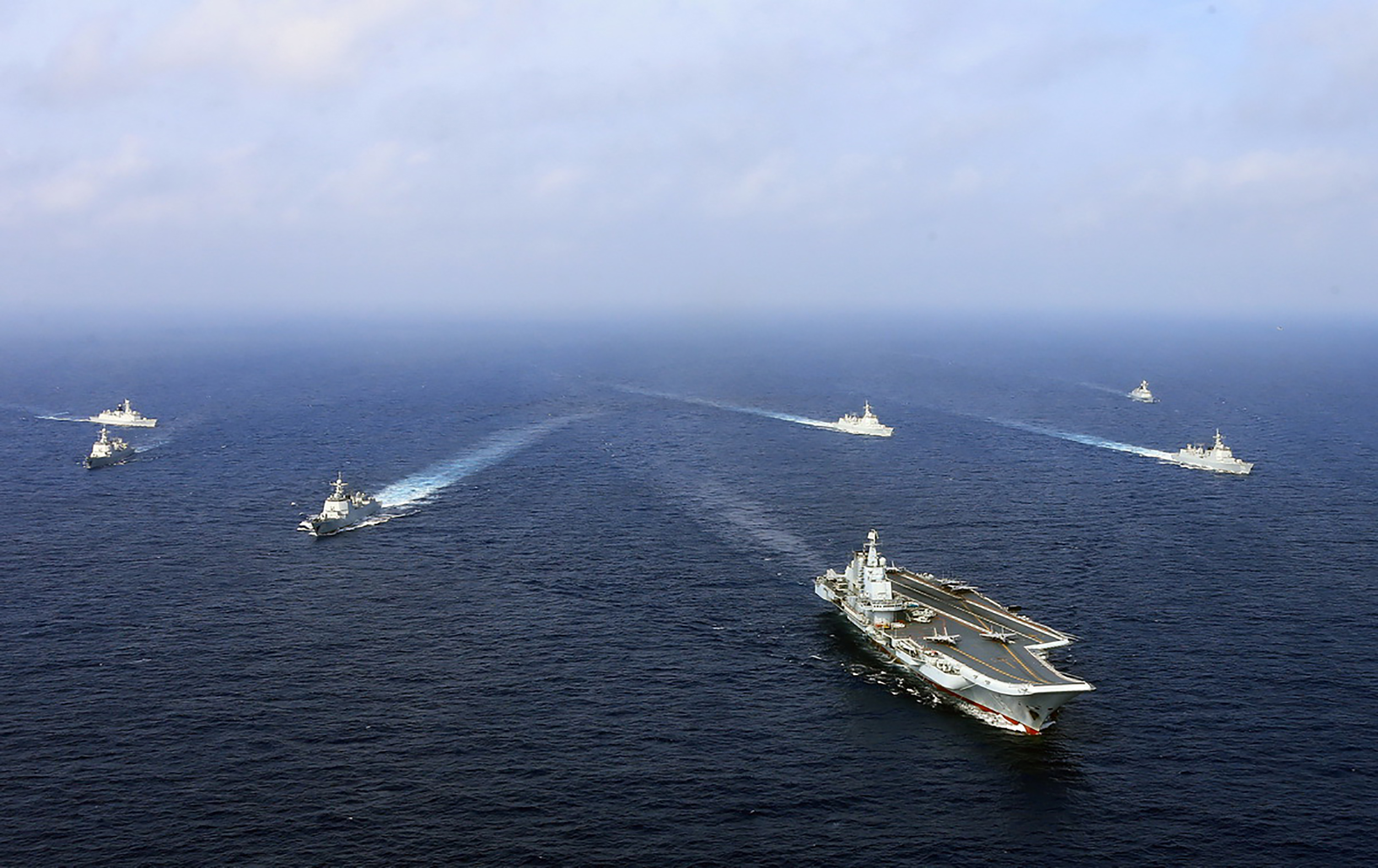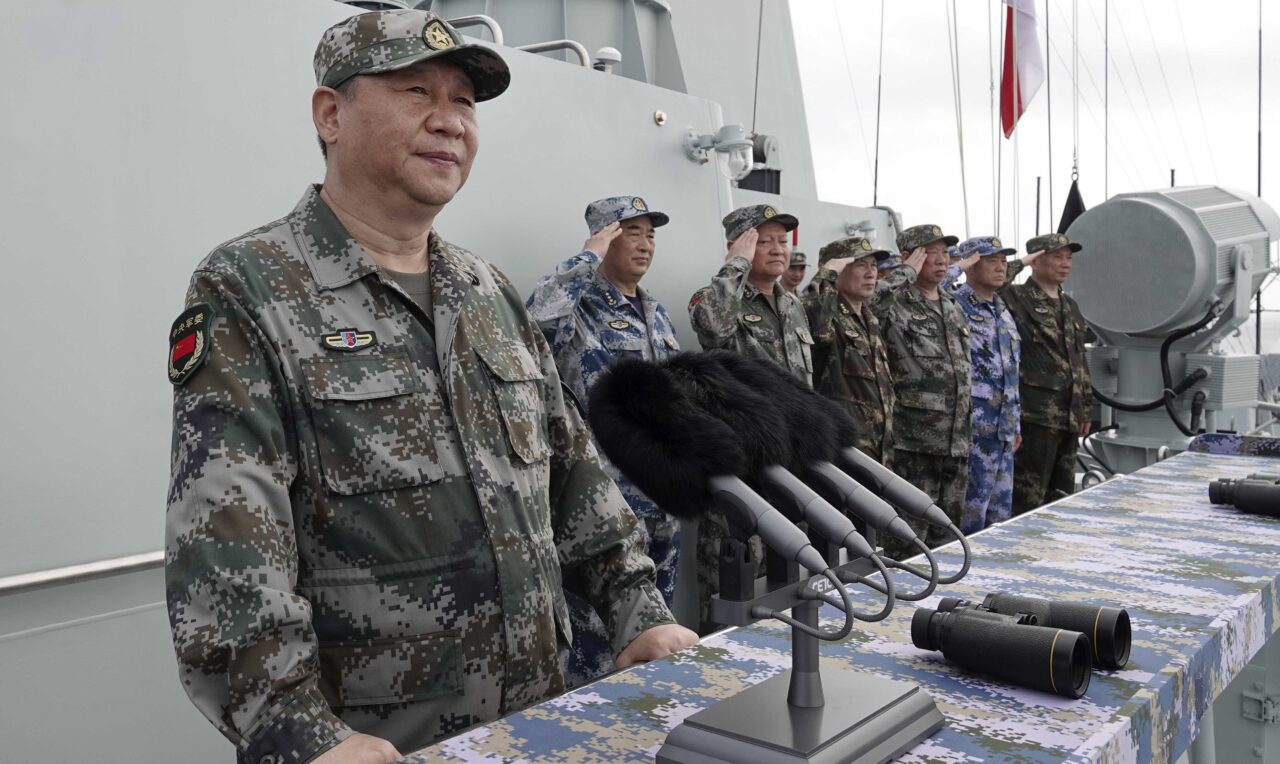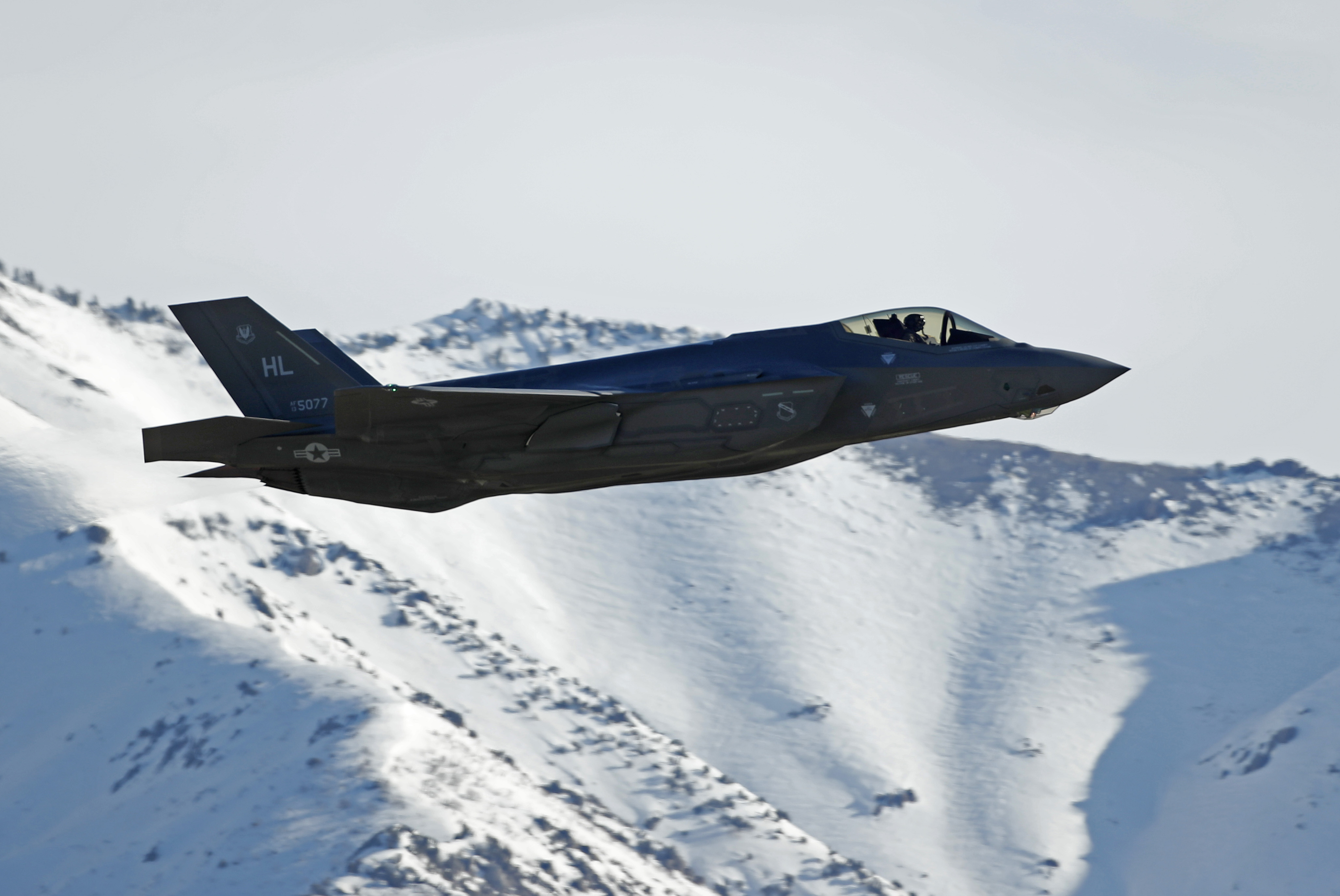China’s Progress Toward Nuclear Triad Faces Major Maritime Shortcomings
Distressed Patriotic Flag Unisex T-Shirt - Celebrate Comfort and Country $11.29 USD Get it here>>

Experts: U.S. nuclear superiority remains unassailable but needs further modernization
New Analysis
Although the United States and Russia have cut down on nuclear weapons spending after the Cold War, China has been expanding its nuclear arsenal to match the top nuclear triad nations, resulting in greater tensions and threat of nuclear warfare.
However, China’s ability to launch nuclear weapons at sea has become a challenge due to problems with its ballistic missile submarines.
On Nov. 18, U.S. Pacific Fleet Commander Samuel Paparo said in Washington that China had equipped six of its Jin-class (Type 094) submarines with JL-3 intercontinental ballistic missiles. Paparo emphasized that these ballistic missile submarines (SSBN) were built to threaten the United States, and that the U.S. Navy is closely tracking them.
Charles A. Richard, commander of U.S. Strategic Command, told the U.S. Senate Committee on Armed Services in March that the JL-3 missiles have an estimated range of more than 10,000 kilometers (6,214 miles), which means China can target the United States from a protected bastion in the South China Sea.
The Yulin Naval Base, located at the southern tip of China’s Hainan Island, is one of the most important military installations of China’s South Sea Fleet, and is where the Chinese boomer submarines are located.
The U.S. Navy often refers to ballistic missile nuclear submarines as “boomers” because they are “loud noisemakers.”
On July 8 last year, commercial satellite imagery showed a Chinese Type 094 submarine returning to its Yulin Naval Base. Although clouds partially obscured the ports, at least one other Type 094 submarine could be seen docked at its berth. These ports are protected by nearby surface-to-air missiles.
Type 094 is currently the only class of submarine in the Chinese navy dedicated to launching nuclear weapons. According to the Pentagon, it represents China’s first credible sea-based nuclear deterrent.
China has built four Type 094 submarines and two Type 094A variants. The first Type 094 submarines were built in the early 2000s and entered service a few years later. The latest 094 entered service in April 2021.
The 094 and 094A submarines can carry 12 launch tubes for JL-2 submarine-launched ballistic missiles (SLBMs), each capable of carrying a nuclear warhead with a range of 7,200 to 9,000 kilometers (about 4,500 to 5,600 miles). If launched in the China Sea, the JL-2 missiles would have enough range to strike several nuclear powers in the region, such as Russia and India, but would be unable to reach the continental United States.
However, its range includes Guam, Hawaii, and Alaska.
Problem With Chinese Nuclear Submarines
Although Type 094 represents China’s first improved ballistic missile submarine (SSBN), it still suffers from major flaws. The most obvious problem is that its underwater noise is two orders of magnitude louder than similar U.S. or Russian submarines.
According to the U.S. Office of Naval Intelligence, the Type 094 is noisier than the Delta III-class submarine built by the Soviet Union in 1976. The variant 094A was originally designed to solve 094’s noise problem to reduce the detectability of the submarine, but the change was negligible.

Reprtedly, China intends to replace its Type 094 submarines with the next-generation Type 096 currently in development to strengthen its sea-based nuclear deterrence. However, such a replacement plan does not represent modernization of the Chinese navy, it just indicates that the previous models had many problems that needed fixing.
The Type 096 submarine is expected to be armed with JL-3 ballistic missiles and Multiple Independent Reentry Vehicles (MIRVs) carrying several warheads that can be aimed at different targets.
The Pentagon estimates that by 2030, China may deploy up to eight ballistic missile nuclear submarine fleets composed of Type 094 and Type 096 ships.
Efforts to step up the ballistic missile submarine program are part of China’s attempt to achieve a reliable nuclear triad system—a three-pronged military force capable of launching nuclear weapons from land, sea, and air.
China’s nuclear arsenal is quickly catching up to the nuclear triads of the U.S. and Russia.
Challenges of China’s Sea-based Nuclear Force
The main problem with the existing Type 094 submarines is their low survivability in distant waters.
It is almost impossible for them to carry out missions deep in the seas distant from mainland China without protection from the ground missile defense system because of the submarines’ noisiness.
In order to present a credible threat to other nations, 094 must be able to pass through key choke points. However, any covert operations are difficult when the subs are easily detectable by anti-submarine forces.
The United States and its allies can monitor the whereabouts of the Chinese submarines by using key routes to and from the Pacific Ocean, including the Miyako Strait, Bashi Strait, and the Sulu Sea.
The sea plays a key role in the nuclear triad system due to its concealability and the element of surprise. The objective is for a vessel to survive after launching its first nuclear strike, enabling a credible nuclear counterattack.
However, once a nuclear submarine is no longer concealed, it is equivalent to a mobile maritime missile launcher and likely to be eliminated as a key target before launching anything.
Chinese military operational doctrine also limits its raucous nuclear submarines from conducting regular deterrent patrols loaded with nuclear warheads.
China has long been reluctant to deploy live nuclear warheads without active state-based conflicts, opting to keep them separate from the sea vessels until needed.
This is related to how the Chinese Communist Party (CCP) manages its military. Leaders in the CCP do not fully trust its military. They are afraid that such a deadly weapon could be used in a coup by military leaders, hence they don’t give the navy unfettered access to weaponry.
Due to the Chinese SSBN unit’s premature command, control, and procedures, and the vessels being easily detectable, it cannot match the navies of the United States and Russia.

Washington on High Alert Over New Long-Range Chinese Missiles
Despite the Chinese disadvantage in submarine technology, Washington went on high alert with the recent Chinese deployment of JL-3 intercontinental-range ballistic missiles in its current Type 094 SSBNs.
The missiles reportedly have an estimated range of more than 10,000 kilometers, capable of making the South China Sea a nuclear missile launchpad and bypassing the problems with its submarine technology.
The JL-3 missiles reportedly have enough range to threaten U.S. soil without the Chinese submarines leaving their base in the South China Sea or sailing into international waters.The area is protected by land-based missile defense forces, a navy, and fortified islands.
Because the major sea lines of communication span across the South China Sea, the region’s unique and complex underwater noise environment enables the Chinese submarines to hide in thermal and acoustic signatures, making them harder to detect.

Experts: U.S. Nuclear Superiority Unassailable but Needs Enhancement
Although the new Chinese missile has alerted the United States, security experts suggest that the U.S. remains unassailable in its ability to ensure a nuclear deterrent that overpowers its adversaries.
In a forum on Nov. 9, Toshi Yoshihara, a senior research fellow at the Center for Strategic and Budgetary Assessments (CSBA), a U.S. defense think tank, said China has played up the idea that extended deterrence “tends to be very fragile” when a crisis arises.
He said that Beijing believes it could split apart allies before a conflict with just the threat of using nuclear weapons.
As a result, U.S. allies in the Pacific, such as, Japan and South Korea, have asked Washington for an extended deterrence alliance in the region, according to USNI News, the U.S. Naval Institute’s online news and analysis portal.
The report suggests that U.S. sea and land-based nuclear deterrence is no longer enough to prevent the growing ambitions of the CCP and Russia.
“[The U.S.] must be thinking of deterring Russia and China simultaneously, [not consecutively],” one expert suggested.
He added that “[the country] needs to have a sense of urgency” that includes pursuing missile defense for Guam, potentially expanding the Australia, UK, U.S. (AUKUS) technology transfer agreement to include Japan and South Korea, and rebuilding America’s own conventional weapons arsenal.
The panelists concluded that in order to ensure a credible deterrence against the CCP, the United States needs to maintain a relatively high nuclear arsenal and modernize its nuclear triad. They recommended that the United States address “an assurance and deterrence gap without trying to match Moscow and Beijing weapon for weapon.”
Also, the United States should prioritize enhancing the capability of its air-launched nuclear weapons and ensure that all bombers, “including the F-35 Lightning II Joint Strike Fighter, are capable of carrying long-range stand-off missiles, build more B-21s than projected, and extend the construction of the Columbia-class ballistic missile submarines.”

Views expressed in this article are the opinions of the author and do not necessarily reflect the views of The Epoch Times.






